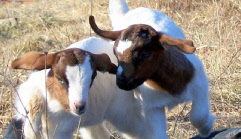
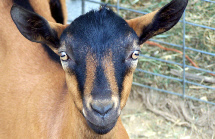
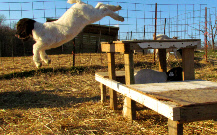
Choosing A Goat
In my case, I simply fell in love with a lovely little doeling in the barn down the road. At the time I knew nothing about goats except that they were cute. Over the years of raising these fun animals, I’ve found that they are often too intelligent for their own good. They’ll gradually figure out how to escape their pen and find the most expensive garden plant to chow down on.
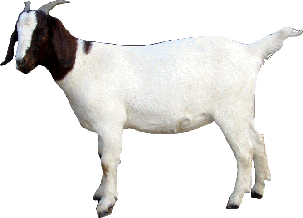 Goats are very useful animals; they provide milk, meat, and fiber. Today, more
than half the world’s population drinks goat’s milk. The popularity of goats in
the U.S. is rising as well.
Goats are very useful animals; they provide milk, meat, and fiber. Today, more
than half the world’s population drinks goat’s milk. The popularity of goats in
the U.S. is rising as well.
Before choosing to purchase goats, it is important to dismiss some persistent
myths pertaining to goats. Goats are not lawn mowers. Does are not smelly. Goats
do not eat tin cans. Goats are browsers, meaning that they would rather reach up
to eat. They eat vegetation such as leaves, twigs, and young shoots of trees and
shrubs which they prefer to food at ground level. Does are very clean and are
very fastidious about what they eat. Although well-
To choose a breed, you should base your decision on your personal preference, the purpose of your goat enterprise, and the popularity of the breed in your area. You may consider buying breeds that are rare in your area in order to have a market for your kids but then it would be harder to get new bloodlines. Also take into consideration whether you want to show animals, simply have pets, or raise them commercially. These questions will greatly impact your choices.
If you start out with good animals it will be easier to attain your herd goals
than if you bought lower-
How Many? How Old?
It takes two goats to keep each other company. A single goat becomes
noisy and gets into more trouble than if it had a friend. If you only need one doe,
than you can buy a wether (castrated male) to keep her company. I would not recommend
getting a buck unless you have more than a few does and have had a few years of goat
experience. If you do get a buck, and you only get one, then a wether could also
keep the buck company. You should also have toys for your goats since they can get
bored. A raised platform or a rock lets goats play king-
How old your goat is depends on your needs. If you need milk right away
than you should purchase older does. But for a 4-
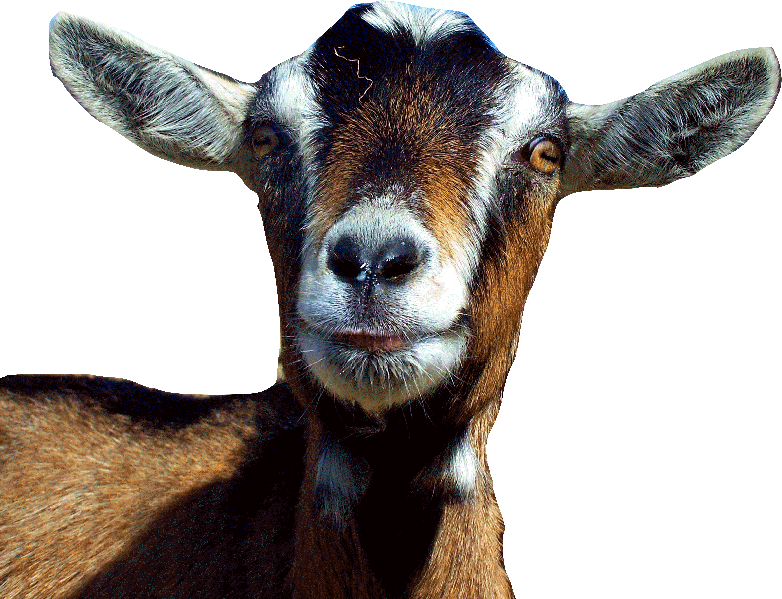
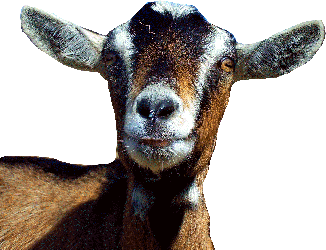
Checking your goat
Before taking a goat home you should look it over at its current home. You should check the facilities to see that the owner cares for the goat. Always make sure the goat is healthy. Its eyes should be bright, lively and curious. It should stand squarely without any lameness and walk smoothly and naturally. Preferably, dairy goats should not have horns because it could injure other goats. The goat should have jaws that meet properly, without any underbite or overbite. Lastly, you should check the goat for lumps, knots, sores, scabs, and scars. If the goat has unhealthy skin, listlessness, or seems in a general rundown condition you should have a vet to check it. Always get a vet to check the goat if you aren’t sure about the health of the animal.
You should also ask to see relatives of the goat to look for any problems
which may appear in your animal. When you are purchasing a buck, ask to see all female
relatives and his pedigree. Always buy a docile buck. Bucks can grow to be 250-
When buying a dairy animal, its general appearance should be a good indicator
of milking abilities. Check the udder if the goat has one. It should be round,
with smooth, elastic skin and no scars, sores, or lumps. The udder should be high
and wide with good udder attachment. There should be two well-
Above all, you want to know a little about the personality of the goat.
You want a goat who is docile, obedient, and handles easily. There is no point
in buying an excellent 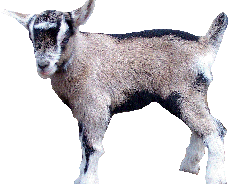 milker if she is so stubborn that you won’t be able to milk
her.
milker if she is so stubborn that you won’t be able to milk
her.
Basically, when choosing a goat use common sense.
Where to buy goats. What is a good price?
The best way to find goats for sale is through a local goat club or a goat show. Nowadays, many farms have web sites which is another good way to find goats. The worst place to buy a goat is at a auction since goats are put under a lot of stress and may contract diseases from other goats. Private sales cause the least stress to the goats. Always have facilities for goats ready for the goat when it arrives. Spend time with the goat when it comes so that it gets used to you and your voice. If you already have an established herd, isolate the new goat for a month before letting them with the other goats to watch for any diseases.
The cost of goats depends on the goat and the seller. A good registered goat would cost a lot more than a goat of unknown ancestry. Kids generally cost less than does, and Does cost more than wethers. But also the value of a goat plays an important role. The average cost for registered breeding stock is $300 to $500, with champion pedigrees, milk production record animals and unusual coloring receiving premium prices. Pet quality stock often costs much less, and wethers (neutered males) can be purchased for around $75 to $150.